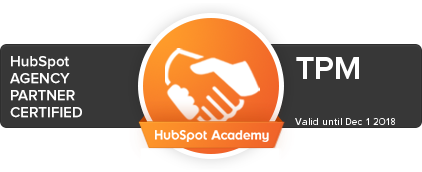7 Simple Marketing Strategies for Tech Companies on a Budget
- Dean Ara
- June 19, 2017

Marketing and sales are vital to the success of any tech company. That’s not news. But let’s face it. Budget matters. Not all companies have the wherewithal to do what some of the biggies do. For instance, Salesforce and Tableau each spent a whopping 53% of their revenue on sales and marketing in 2014, while Constant Contact spent 38% and Manhattan Associates 12%.
But before you laugh or throw your hand up in despair, there are marketing strategies for tech companies on a shoestring that can keep you competitive — and successful. A more typical — and recent — spend on marketing for tech companies is about 15% of their total annual budget, according to the CMO Survey.
And you can do them yourself, or you can hire a digital marketing agency to work with you.
What’s Your Goal?
There’s no sense doing marketing unless you know what you want it to achieve. So consider what you want to achieve specifically — and give it a measurable number so you can evaluate whether your tactics are working.
As Neil Patel and Bronson Taylor observe, sometimes your sales funnel can decide this for you.
If you are converting 50% of all visitors to members, and 50% of all members to users, but you are only getting 200 new unique visitors a day then you should obviously spend your time getting visitors. In other situations you might want to wait on getting visitors until you are more successful at moving people through other aspects of the funnel.
So think about what you want to do — and then keep narrowing it down. It’s not enough to say your want more visitors or a better conversion rate. Look at “your goals as nested hierarchies, and until you reach the ‘nest’ where things can actually be marked off as individual tasks which can be completed once and for all, then you’re not narrow enough,” explain Patel and Bronson.
Establish Yourself, Your Company As a Thought Leader
Whether you offer SaaS, PaaS, apps, or some other tech product or service, establishing yourself and your company as a thought leader in the tech arena brings benefits — including a good-sized leg up on your competition. And, it doesn’t have to cost a fortune, although it will take time and effort.
You can use some or all of the marketing strategies for tech companies in this post to help put you in that thought-leader position. But keep in mind: the majority of tech professionals — think those that are considering the solution you offer — prefer “data-driven, educational content.”
Marketing Strategies for Tech Companies
1. Blogs: Attract Prospects Looking to Solve a Problem
When you have a problem, be it with coding or customer service, how do you find a solution? When you know the general solution, how do you decide among alternatives? And, once you think you’ve found the best option, where do you turn?
If you’re like many in this digital age, you turn to Google.
Blogs are a terrific way to attract visitors to your site and brand, and they can be tailored to any stage in the buyer’s journey. At the top of the funnel, your blogs should be buyer-centric, engaging, and informative. At the bottom, they can help readers understand more precisely how your product fixes their problem better than anyone else’s. And, in the middle, they can be about new features you’ve added or what they should consider in their evaluation process.
Blogs focus on education, not selling. Your content sets you up as an expert in whatever it is visitors are looking for. Demonstrate how well you understand their pain, how well you know what can help, and even what downsides or challenges could exist. This begins to build their trust in you and is part of your relationship building.
Pros of Blogs:
- B2B markets that use blogs generate 67% more traffic and websites with a blog have 434% more indexed pages — certainly a plus when it comes to searching
- Blog posts were turned to ahead of a purchase decision in 66% of the instances discovered by a 2016 DemandGen report
- Act as a source of traffic to the site as blogs are optimized for SEO (we refer to them as traffic magnets)
- Can be used for content in email campaigns
- You can write a blog and use that content — with some tweaking — and repost it in LinkedIn and you won’t be penalized
- You can turn your blog into a mobile app and use push notifications to distribute your content to your core audience
Cons of Blogs:
- Organic traffic can take a long time to develop because it’s a combination of site visitors, Google algorithms (for instance, does Google view you as a trusted source and domain expert?) It could take six months or more to see an uptick in traffic, and during that time, you’ll need to blog regularly — at least three to four times a month to make a difference
- For every stupendous blog you write — one that has great content, great keywords, and a good search volume on those keywords — you’ll probably write 10 really average ones
- It can be hard to come up with highly original content all of the time

2. Public Relations: Getting Your Name Out There
The second of the marketing strategies for tech companies is public relations, and the “ROI can be incredibly valuable,” especially if you go a hybrid route and “meld PR into SEO/paid media/social media,” according to an article on Entrepreneur.
This is another strategy that works to position you as a thought leader. You can write magazine articles, newspaper pieces and send out news releases about milestone events. Conversely, you could also hire a marketing agency to help out here.
Pricing for a PR campaign can vary tremendously. If you undertake it, all it takes is sweat and tears — and time away from making your product even cooler than it already is. If you hire it out, the cost depends on how long the push will be, what content will be produced and the size of the agency you hire. Lean tech companies should look for a firm that’s similar in size to help keep costs from ballooning, suggests public relations pro Todd Brabender.
Pros of a PR Push:
- Great for awareness and thought leadership
- Great to establish a persona as the CEO
- Article placement can lead to other opportunities (speaking, webinars, interviews)
Cons of a PR Push:
- Hard to measure how much it leads to demand and lead gen
- Hard to get article opportunities without a “compelling story”
- Nothing is guaranteed. Publication is always at the whims of the editor
3. Email Marketing: To Further Relationships, Nurture Prospects
Using email is another of the marketing strategies for tech companies. Use email to:
- Thank people for subscribing to your newsletter
- Inviting them to view another piece of content based on what they downloaded the first time
- Invite them to a webinar or other event
- Ask how things are going
- … And tons more
But, it’s important to be able to segment your list and personalize emails so they can target the particular segment of subscribers your want.
Pros of Email Marketing:
- Campaign Monitor says email marketing “is the king of the marketing kingdom with a 4400% ROI and $44 for every $1 spent”
- Forrester Research found that companies that use email marketing to nurture leads bring in 50% more sales-ready leads — at a 33% lower cost, according to HubSpot
- Creating emails and landing pages is fairly cost effective
- Great way to drive calls to action
Cons of Email Marketing:
- If you don’t have your own email list, and just buy one instead, recipients may have never heard of you. They are “cold” prospects. It’s very hard to get their attention
- Depending on the software you use, you can be limited on how many emails per month you send
- People get a lot of emails. It’s really hard to stand out in the clutter
- Need to constantly come up with original content in order to have a reason to email your list
4. LinkedIn: Personal, Corporate, or Both
Among the marketing strategies for tech companies is the use of LinkedIn. 94% of B2B enterprise marketers surveyed by the Content Marketing Institute prefer LinkedIn as their top social media platform. And there’s good reason for that:
- There’s a heavy concentration of tech professionals on it
- 50% of buyers of B2B products and services use LinkedIn when they make a purchasing decision
- 76% rely on recommendations about that decision from their LinkedIn network
On LinkedIn, you can participate in groups, post articles, and answer questions — all with the goal of increasing awareness of your company and building it as a thought leader.
Pros of LinkedIn:
- Can leverage content from your website blog. However, don’t publish posts to LinkedIn until they have been on your own site for a month
- Can republish press releases here. You may decide it works best to publish just part of the press release on LinkedIn and link to the whole release that resides on your site
- Can republish thought leadership pieces, but again, probably best to publish a portion of it and link it to the full piece
- Great for personal connections
Cons of LinkedIn:
- It’s important to post in “your own voice,” one that is authentic. Although an agency can post on your behalf, it could be touch and go in terms of how authentic it is to your own brand
- It’s a great personal marketing tool, but you really need to be engaged in groups. The idea is to be helpful and nurturing; you can’t be selling all the time

5. Organic Social Media: Twitter and Facebook
There are more than 60 million businesses that have Pages on Facebook, but about 87% of posts to those pages never get answered. This gives you an opening. Give advice; answer questions. Provide value.
Twitter has 328 million users, not all of whom you’ll want to target. So, build your list of followers carefully, segment them into lists based on particular hashtags or interests, read some of the questions that are Tweeted, and respond. Sure, it’s OK to tweet about your new piece of content, but don’t do that exclusively. The idea is to build relationships, credibility and establish yourself as a thought leader. Make use of videos, direct messages, and graphics to help your Tweets stand out.
Social media is a place for customer support, for building and nurturing your relationships with prospects and current customers — and it can bring in new traffic. “As people watch your stellar customer support happening in public then they will be more apt to try your product themselves,” say Patel and Taylor.
Pros of Organic Social Media:
- You can use each for free
- 73% of people use Facebook for professional purposes and 76% of use their feed to find interesting content, according to a HubSpot report
- If you attract the attention of influencers, your reach can expand significantly
Cons of Organic Social Media:
- As Facebook becomes more of an advertising platform, the organic reach of Facebook pages has fallen to less than 3%. It’s become “pay to play.”
- It can take a while to tweak who you follow and who follows you to get just the audience you want to target
- It can be hard to measure results
- If time is precious, organic social media might not be the best first choice
6. Paid Social Media: Facebook
Facebook ads can be a good way to build your subscriber base, direct people to a landing page, create interest in your brand, and more. The average conversion rate for ads on this platform across all industries is 9.21%, although for tech companies that drops to 2.3%. Still, that’s better than the nearly 40% of marketers who have landing pages that convert at less than 1.4%.
Facebook has an Advertising Best Practices group specifically for small- and medium-sized businesses where participants share ideas and offer advice.
Pros of Paid Social Media:
- Because Facebook gets 95% of its revenue from ads, it “rolls out new targeting methods and ad formats faster than any other platform,” which gives you a leg up
- Social sharing is growing, and Facebook is responsible for more than 90% of it. Twitter accounts for only 6%, with LinkedIn trailing at only 2.5%
- Facebook has rich targeting features (job titles, geographic, etc.), much better than Google Adwords
- Compared to Adwords, Facebook ads are relatively inexpensive and can provide great value
- Easy A/B testing to see which is most effective
- Offers a variety of placement options
- Fantastic advertising platform with easy-to-use tools
Cons of Paid Social Media:
- Requires an ad budget of around $2,000 to $3,000 and up a month to get started depending on your target market
- Ads need/should be monitored and tweaked to get the most out of them

7. Pay-per-Click: Google AdWords Retargeting
Retargeting refers to display ads that show up on another site being visited by a person who’s already been to your site, and you can do this through the Google Display Network. This means they’ve already shown some interest in what it is you offer. In essence, now, even your ads can be pre-qualified. The Google Display Network is one of the most power-packed advertising tools you can use, and it reaches 90% of global internet users.
But you need a strategy. Who, specifically, will you target? There are many choices, including targeting those who visited:
- Your home page
- One page, but not another
- Based on keyword
- Two particular pages
Pros of Retargeting:
- Visitors who are retargeted are 70% more likely to convert than those who aren’t
- If you’re already using AdWords, all you need do is add a small piece of Google code, so it’s easy
Cons of Retargeting:
- Requires an ad budget of around $2,000 to $3,000 and up a month to get started
- Doesn’t attract a new audience
Pulling Marketing Strategies for Tech Companies All Together
It can be tough to develop a marketing strategy when you have only a few thousand dollars a month, but it’s not impossible.
It all goes back to your goals. Choose a manageable one. Decide which of the marketing strategies above will help you achieve that. And then, go for it.
Or, give us a call. And we’ll work with you to create the strategy, implement it, evaluate and tweak it. Or join us on LinkedIn and be part of the conversation.



